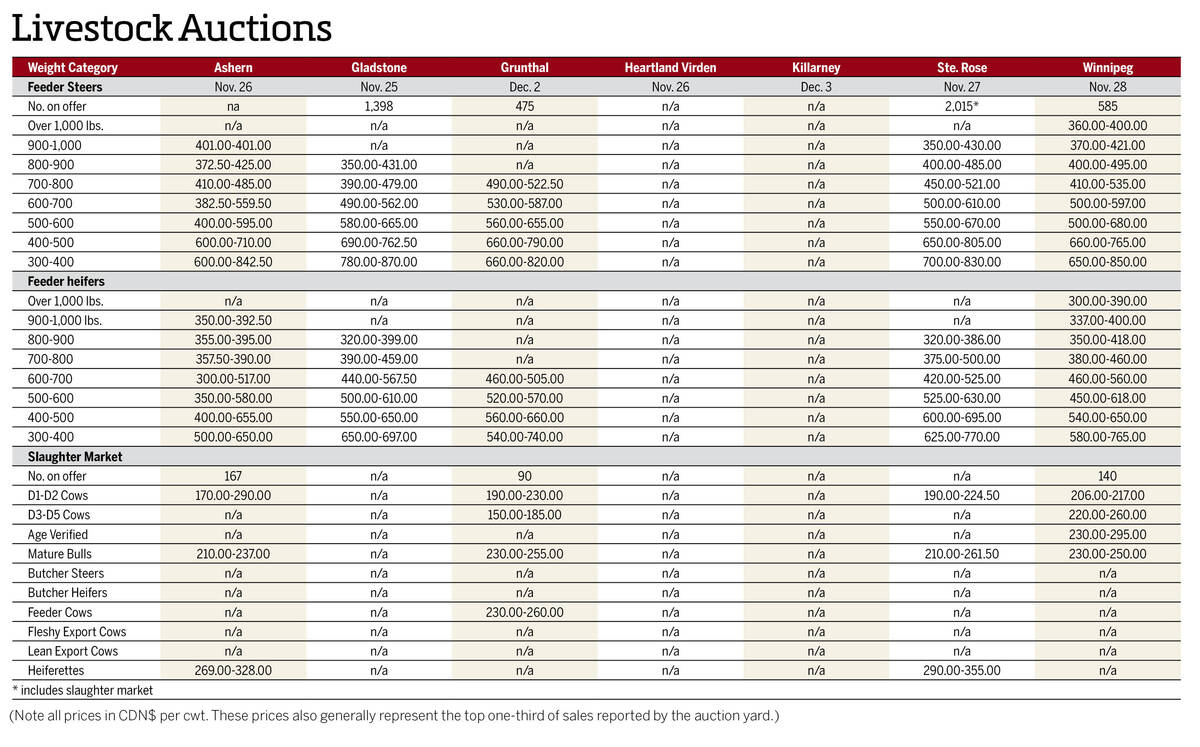Canola futures endured a topsy-turvy week ended July 17, with most ICE contracts seeing net gains of about $15 per tonne. Where the Canadian oilseed goes from here, really depends on the Prairie weather.
From day-to-day the region’s weather was one of the major influences that led to canola’s price swings. One day, ideas of rain coming weighed on values. Another day, notions of more dry conditions spurred increases.
Overall, the canola crop across the Prairies is in fairly good shape with Western Producer markets desk analyst Bruce Burnett estimating production at about 18.6 million tonnes. That would be down around 550,000 tonnes from Statistic Canada’s most recent output estimate for 2024/25.
Read Also

Manitoba cattle prices, Dec. 3
Cattle prices from Manitoba’s major livestock auction marts during the week Nov. 25-Dec. 2, 2025.
While Burnett said canola yields should average about 38.6 bushels per acre, he warned those in the dry areas of the Prairies could fall to 20 bu./ac. or as low as 15.
As long as canola remains mired in a weather market, we will keep seeing those big fluctuations based on the idea of whether it’s going to rain or not.
The speculative funds also played a role in the big swings during the week. On days the funds were busy liquidating, canola prices took a sizeable hit. When the funds backed away, the oilseed seized the opportunity to recover from its losses.
Farmer selling, perhaps the lack thereof, is yet another factor. Simply, producers are not going to sell when they see canola prices driven lower. But when they see gains, that might encourage them to part with whatever canola they still have in their bins.
With three weeks left in the 2024/25 marketing year, canola might not reach the projected 9.5 million tonnes in exports. That said, Agriculture and Agri-Food Canada recently raised their canola export estimate a couple of times, as those have been very strong this year at more than 9.23 million tonnes through 49 weeks compared to 6.52 million the same time last year.
Domestic use remains a little ahead of last year, with canola just short of 10.90 million tonnes versus 10.42 million a year ago.
We are a little more than a month away from having a better idea of what’s happening to canola. Statistics Canada will release its first production report on Aug. 28.
















